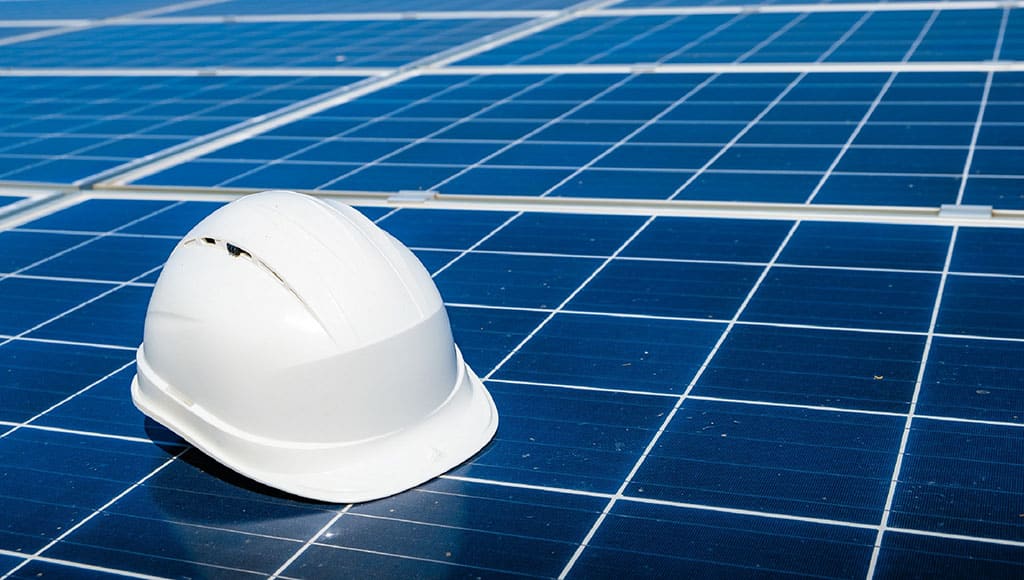More and more people are adopting photovoltaic energy, a free and clean energy source that is environmentally friendly. As concerns about conserving natural resources grow, photovoltaic systems offer an efficient and sustainable solution.
Have you noticed the increasing number of homes with water heating or energy production panels installed? This trend is partly due to government mandates for new constructions and the significant savings that can be achieved over time. With the continual rise in energy prices, the demand for photovoltaic systems is increasing.
But what about you?
Have you considered installing a photovoltaic system?
Are you feeling overwhelmed by the process of choosing the right system or understanding what best suits your needs?
Let us guide you through this process smoothly, without any headaches or surprises.
First Step: Analyse your electricity bill
Typically, you will find three readings: Off-Peak (Vazio), Peak (Ponta), and Full (Cheias), measured in kW. Here’s what each means:
– Off-Peak: Energy consumed during the night.
– Peak and Full: Energy consumed during the day.
Review your monthly bill and divide it by 30 to get your daily consumption. Repeating this for 3 to 6 bills will give a more accurate daily average. To determine your hourly consumption, note that energy production is measured in kWh.
For example, if your nighttime consumption (Off-Peak) is 15 kW over 10 hours, the average is 1.5 kWh per hour. During the day, divide your consumption by 10 hours (considering a conservative estimate of sunlight hours). If your daytime consumption (Peak and Full) is 30 kW: 30 kW / 10 hours = 3 kWh.
The compensation for the 4 hours not accounted for in these calculations is made up by times when you are not fully using 1.5 kWh at night or 3 kWh during the day, as your house will not typically be operating at full capacity continuously.

Second Step: Check the type of installation
Determine whether your home supports a Single-phase or Three-phase installation and the maximum allowed power.
– Single-phase systems are common in residential settings, handling lower power loads with one alternating current (AC) wave.
– Three-phase systems are used for higher power loads and are more efficient, providing three AC waves. They are common in commercial and industrial settings but can also be found in larger homes.
If in doubt, feel free to contact E-Redes at +351 218 100 100. Their support hours are from 8am to 8pm during the week, and the cost is the same as a national landline call.
Third Step: Determine the available space for installation
Ideally, the space should face south to maximize sun exposure. Each panel measures between 1.10 to 1.20 meters wide and 1.80 to 2.10 meters long. Calculate the available area and choose your panels accordingly.
How many panels to install?
If you choose 460W panels and your daily consumption during the day is 3 kWh, and knowing that 1 kW equals 1000W, you will need 3000W / 460W ≈ 6.5 panels. Adding 25% to compensate for losses results in needing 8 panels.
Fourth Step: Choose the materials for installation
Selecting the right supplier is crucial. Consider the technical support and the market longevity of the equipment, especially for the inverter and batteries.
About Batteries
Choose a hybrid inverter capable of accommodating batteries. If your nighttime consumption is 15 kW and you want a battery with a 15 kW capacity, ensure you produce enough energy during the day to charge the battery.
Revisiting the exercise
-Nighttime consumption: 15 kW / 10 hours = 1.5 kWh.
– To produce an additional 1.5 kWh during the daytime, you need 1500W / 460W ≈ 3.26 panels + 25% (losses) ≈ 4 additional panels. Thus, in addition to the initial 8 panels, you would add 4 more, totaling 12 panels.
Conclusion
For a house with the example consumption, it is recommended to install 12 panels of 460W each, with an inverter of at least 6 kWh and a 15 kWh battery, making the home almost autonomous from the grid.
Always consider variations in sunlight hours throughout the year, temperatures that affect production, and whether you can adjust your consumption habits to align with production times.
Installing a photovoltaic system is an investment in the future. It not only reduces your ecological footprint but can also offer significant savings on your electricity bill.
You can also sell any excess production, as some companies buy it. To sell excess energy, you must register the activity with the tax authorities using code 35113 from the Economic Activity Code (CAE). This involves invoicing the buyer for the energy produced and incurring costs related to accounting. Therefore, selling excess energy may not always be advantageous due to the costs associated with invoicing.
As you embark on this journey, remember that transitioning to renewable energy is a step towards a more sustainable and economically viable future. The initial investment might seem daunting, but the long-term benefits make it worthwhile.
You’ll contribute to a greener planet and enjoy the peace of mind that comes with energy independence.
Isa Conceição is the CEO of Soren – Renewable Energy Solutions, based in Almancil. She assists individual customers and small businesses seeking renewable energy solutions across Portugal. +351 910 030 423 | info@soren.pt | www.soren.pt




















